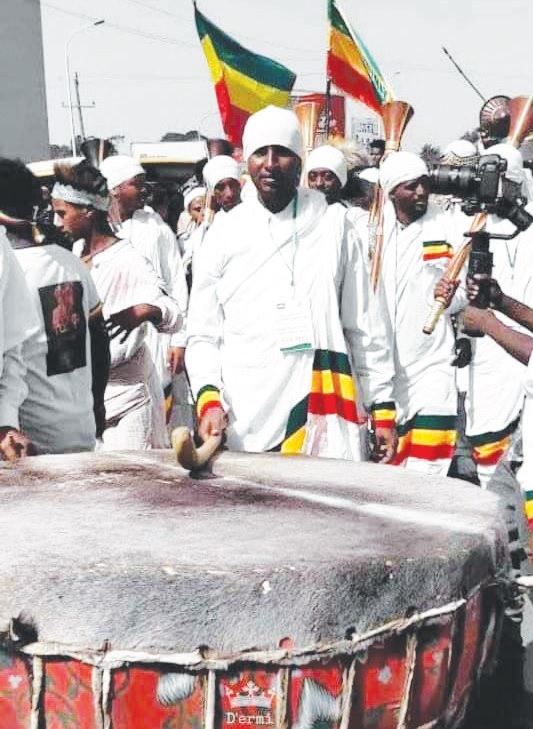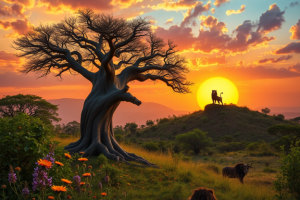
COMPILED BY STAFF REPORTER
The land we know as Ethiopia has a long, complex, fascinating and reasonably well-documented history, during which time it was mostly known as Abyssinia.
That its history is well recorded is no surprise; the ancient Egyptians knew of the region because of the Nile, and people from Palestine and Arabia were regular visitors centuries before Christianity arrived.
It is also home to some of the oldest hominid remains yet discovered, those of ‘Lucy’ and ‘Ardi’, who are three to four million years old. Both were found in one of the hottest parts of Africa, the Afar region near the Red Sea.
Ethiopia has one of the oldest written alphabets on earth, dating back some 3,500 years, and the ancient Ge’ez language is still used for Christian ceremonies. In early times, Tigrai was supposedly home to the Queen of Sheba, who visited King Solomon in Jerusalem and returned bearing his child, who was the first Menelik.
According to legend, Menelik went back to Jerusalem as an adult to visit his father, and returned to Ethiopia with a large retinue from the upper echelons of Judean society, and the Ark of the Covenant. Much of the population in northern Ethiopia followed Judaism for centuries (in common with most of the south western side of Arabia and the Horn of Africa) thanks to these links with Judea.
Ethiopia’s version of history claims that the Solomonic dynasty ruled unbroken from Menelik I to Haile Selassie, a period of more than 2,000 years. The reality is perhaps a bit different with several complete breaks and a few sidesteps on the way. Nonetheless, the highlands especially have been settled for a very long time, and plenty of towns have been populated for a thousand years or more.
Many Ethiopians are intensely religious, whichever creed they follow. The three Abrahamic faiths have strong and long histories.
Christianity arrived in Ethiopia in the 4th century AD, and was gradually adopted across much of the upland region north of the Rift Valley, and as far south as modern day Addis Ababa. Despite the occasional ructions, such as Axum being destroyed by the Jewish Queen Gudit in the 10th century, and several scraps with Muslim invaders or the Ottoman Empire, Ethiopia has been a largely tolerant place for people of different faiths, with Muslims and Christians living in peace.
Indeed, Mohammed declared the Ethiopian church a friend of Islam as several of his retinue were given refuge in Axum in the 7th century. Today, the majority of the eastern lowlands and the south-eastern part of the country is Muslim, with the center being the walled city of Harar to the east of the Rift Valley and Addis Ababa. A surprisingly large number of people were Jewish until the 20th century, but most have now moved to Israel.
Ethiopia’s Orthodox Church is unique in its practices and traditions, and quite likely a close representation of the original form of Christian worship. It has a number of practices that are more Jewish in origin than Christian, such as male circumcision, and a number of dances that probably derive from the pre-Christian Jewish communities in ancient Ethiopia.
The Ethiopian Orthodox Church is most closely related to Egypt’s Coptic Church, but still different to it, and until the 1950s the senior primate of the Ethiopian Church was always an Egyptian cleric.
The back story is also unique, with nine prophets coming from Judea to spread the word in the 4th century AD, all of whom are revered and represented in church paintings.
Along with the nine prophets the churches are highly decorated with pictures of the Virgin Mary and Jesus, and St George on his horse slaying a dragon. The story of Menelik bringing the Ark to Ethiopia is also represented in some cases.
The pictures are all stylized and follow a similar format, with good people always shown full-face even if looking slightly to one side. Bad people are shown only in profile so that at most just one eye is visible.
The carved churches of Lalibela and those hidden in Tigrai’s Gheralta Mountains are fascinating places, and the efforts people went to in order to create some of them is astonishing.
The South Omo Valley is a world. Cut off from the rest of the country by endless ranges of hills and mountains, life here feels more closely related to that in Kenya and Uganda or even South Sudan, very much more African in its outlook and traditions. The Kara people have a meeting house, a huge structure made of large branches and tree trunks, under which they gather for important discussions and events, but otherwise there are no village temples or holy places here.
There is, however, a noticeable respect for the natural world and especially big trees such as figs.
The most tangible differences between each of the tribes are in the way they dress, their adornments, and the style of their houses and villages. The Hamar women, for example, wear large chunky necklaces once they are married, and the number they wear are related to whether they are wife number 1, 2 or 3.
The Mursi are renowned for the lip plates worn by some of their womenfolk, and for the decorative scarring sported by men and women. The Nyangatom women wear their hair in longer braids and have a stack of beaded necklaces, a little like some Masai or Samburu people.
The Kara people are renowned for elaborate body and face painting, which they do with glee for any party or gathering. It is not uncommon for several villages to join for a weekly party here, which involves dancing and singing, and a wee bit to drink. Food is much less of a thing at such a gathering than might be expected.
It is true that the people here have a massive amount of livestock, which itself is a potential cause of environmental damage, but there seems to be a much greater respect for the land than in the Masai country of northern Tanzania for example.
This wonderful mix gives Ethiopia a cultural integrity, richness and depth that is missing from most countries to the south. There is nothing about Ethiopia’s culture that feels imported in the way that Christianity does elsewhere in Africa, and the people tend to dress with more authenticity than you would find in Tanzania or South Africa for example.
Ethiopia is fascinating for many reasons but it is a truly rewarding destination for anyone interested in authentic and ancient societies.
(https://www.aardvarksafaris.co.uk/ethiopia-a-land-of-fascinating-history-and-culture)
The Ethiopian Herald December 9/2020




